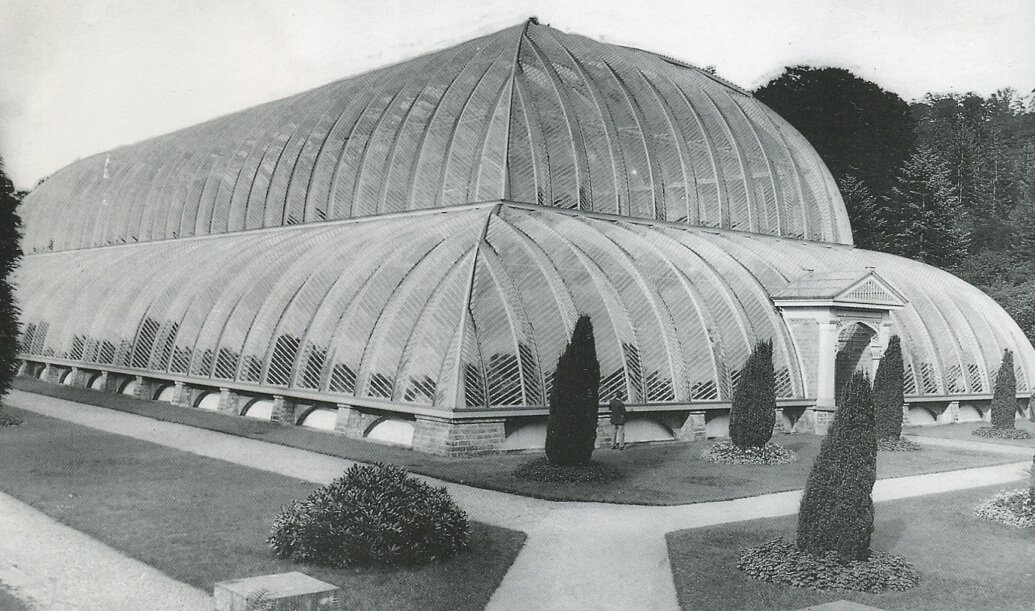
The Great Conservatory at Chatsworth
England, 1840, Architect: Joseph Paxton (1803 - 1865)
The Great Conservatory at Chatsworth was one of famed architect Joseph Paxton’s first creations. He started his career at age 15 as a garden boy for the Royal Horticultural Society’s Chiswick Gardens, and moved up to head gardener at Chatsworth at age 22.
While in the Chatsworth conservatory, Paxton is credited with cultivating the first Cavendish banana. Named after Paxton’s employer, William Cavendish the sixth duke of Devonshire, the Cavendish banana is now the most commonly consumed type of banana in the western world. Not long after this monumental breakthrough, Paxton started construction on the Great Conservatory at Chatsworth.
“In 1832, Paxton began to design “forcing flames,” greenhouses for exotic plants like the pineapple. From these early forays into the design of utilitarian structures, Paxton set his sights on building an extraordinary conservatory for the duke’s garden,” writes Alan Stein and Nancy Virts in their recent book “The Conservatory: Gardens under Glass.” (pg 84/85)
The duke was hesitant for Paxton’s wild ideas, so he hired experienced architect Decimus Burton to consult with Paxton. However, the design is entirely Paxton’s creation. Decimus would go on to help design the Palm House at Kew Gardens with the assistance of Richard Turner in 1844.
The Great Conservatory was the largest glasshouse in existence and inspired his most famous conservatory, the Crystal Palace, which was completed in London in 1851. Paxton’s Great Conservatory measured 277 feet long and 123 feet wide, with a nearly six-storey high glass roof. The space would be so wide that two carriages could pass simultaneously with ease through the glasshouse. Stairs were disguised behind some boulders and allowed visitors to see the whole garden from a birds-eye view.
Construction on the space took four years to complete. King Frederick of Saxony called it “a tropical scene with a glass sky.”
The conservatory was unique in its exterior and interior. The glass exterior allowed sunlight to flood through the space, but glass is a difficult trapper of heat. Underneath the floors of the conservatory, there were eight underground boilers, seven miles of heating pipes, and required ten workers who were compensated generously to operate the heating system. The space became known as “the Great Stove”. It was important to have a heating method for the conservatory so exotic plants and fruit trees could prosper inside during the cold months.
The Great Conservatory was destroyed in 1920 as a casualty from World War I, but its legacy lives on in Paxton’s other glass creations.
Photo Credits: Chatsworth (Body Images)


